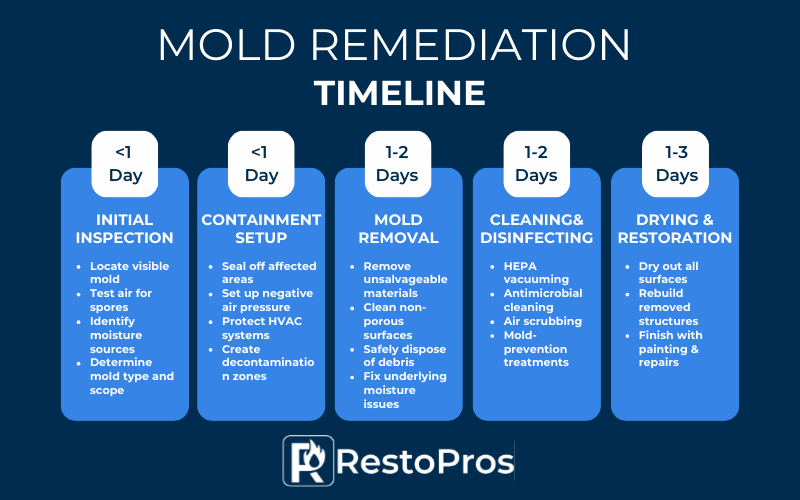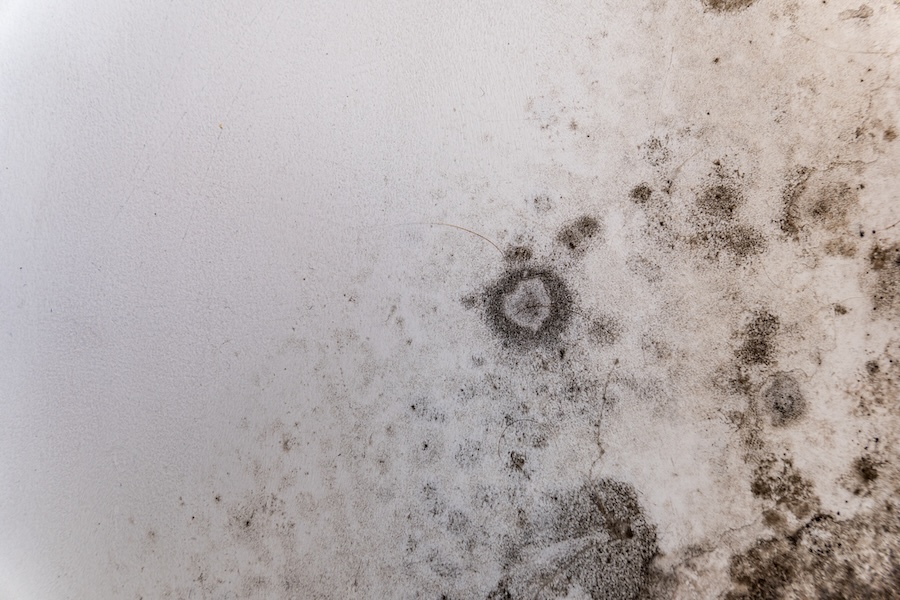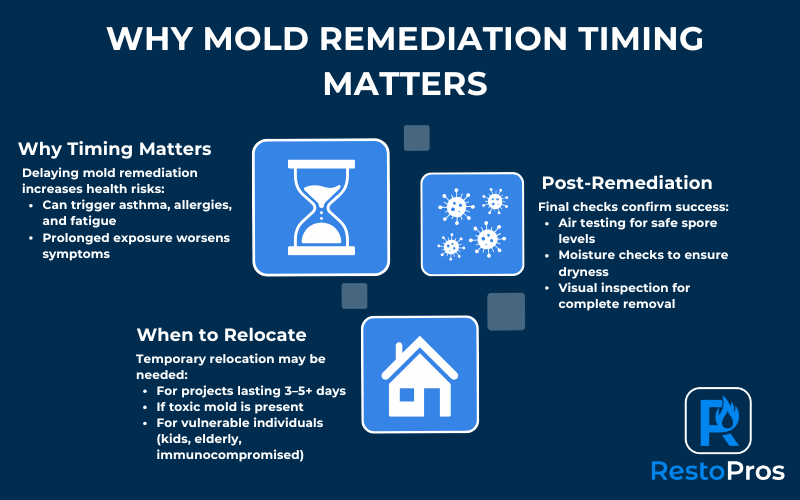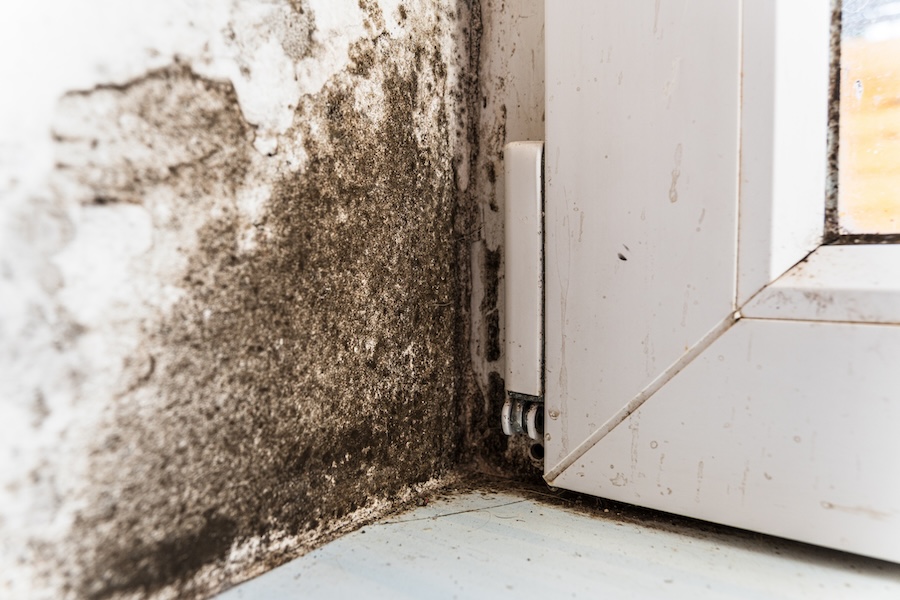Discovering mold in your home or business can be alarming. Beyond the unsightly appearance, mold presents potential health risks and can cause structural damage if left untreated. When facing a mold problem, one of the first questions that comes to mind is: “How long will it take to fix this?”
The Short Answer: In most cases, mold remediation takes between 1-5 days for residential properties. However, for commercial buildings or severe infestations, the process can extend to 1-2 weeks. The timeline depends on the size of the affected area, type of mold present, extent of the damage, and other factors we’ll explore in this article.

Understanding the Mold Remediation Process
The mold remediation process follows a systematic approach to ensure thorough removal and prevent recurrence. Each phase requires specific attention and has its own timeline:
Initial Mold Inspection (1 day or less)
Before any remediation begins, a comprehensive mold inspection is necessary to identify the extent of the problem. Professional inspectors will:
- Locate all areas of visible mold
- Test for airborne mold spores
- Identify moisture sources feeding the mold growth
- Assess the type of mold species present
- Determine the scope of the remediation needed
This initial assessment typically takes about a day but may extend longer for larger properties or commercial buildings.
Containment Setup (1 day or less)
Once the inspection is complete, professionals will establish containment areas to prevent mold spores from spreading to unaffected parts of the building. This phase includes:
- Installing plastic sheeting to isolate affected areas
- Setting up negative air pressure systems
- Creating clean rooms for workers to change protective gear
- Sealing HVAC ducts and vents
- Establishing decontamination areas
Setting up proper containment usually takes approximately one day, depending on the size and complexity of the affected area.
Removal of Mold-Infested Materials (1-2 days)
The next phase involves removing materials that have been contaminated by mold:
- Removing porous materials that cannot be salvaged (carpet, drywall, ceiling tiles)
- Cleaning and disinfecting non-porous surfaces
- Disposing of mold-infested materials safely
- Addressing the underlying moisture problem to prevent recurrence
This phase typically takes 1-2 days but can extend longer if structural elements are affected or if there’s extensive mold damage.
Cleaning and Disinfection (1-2 days)
After removing contaminated materials, thorough cleaning of the affected area is essential:
- HEPA vacuuming surfaces to remove mold spores
- Wet cleaning with specialized antimicrobial solutions
- Treating remaining materials to prevent future mold growth
- Cleaning the air with air scrubbers to remove airborne mold spores
This process generally takes 1-2 days, depending on the size of the area and the severity of contamination.
Drying and Restoration (1-3 days)
The final phase involves:
- Ensuring the area is completely dry
- Addressing any excess moisture issues
- Replacing removed materials (new drywall, flooring, etc.)
- Painting and finishing touches
Restoration can take 1-3 days for smaller areas but may extend to weeks for extensive remediation projects that require significant rebuilding.
Thorough completion of each step in the remediation process is crucial to prevent future mold growth. Rushing through any phase could lead to incomplete removal, allowing mold to return shortly after remediation.

Factors That Influence Remediation Timeline
Several key factors can significantly impact how long your mold remediation will take:
Size of the Affected Area
The square footage of the affected area is perhaps the most obvious factor affecting timeline:
- Small areas (under 10 square feet) may be remediated in 1-2 days
- Medium areas (10-100 square feet) typically require 2-5 days
- Large areas (over 100 square feet) or whole-house infestations can take a week or longer
Commercial buildings with extensive mold issues may require several weeks for complete remediation.
Type of Mold Species
Not all mold is created equal. Some mold species require more careful handling:
- Common household molds may be remediated relatively quickly
- Toxic black mold (Stachybotrys chartarum) requires more extensive safety precautions and careful remediation
- Certain mold species are more resistant to treatment and may require specialized approaches
Location of Mold
Mold in easily accessible areas is faster to remediate than mold hidden in hard-to-reach places:
- Surface mold on visible walls can be addressed relatively quickly
- Mold behind walls, under floors, or in crawl spaces extends the timeline
- Mold in HVAC systems requires specialized cleaning and may add days to the process
When mold is discovered in hidden areas during remediation, the timeline often extends as these newly discovered areas are addressed.
Extent of Water Damage
Since water damage and mold growth often go hand in hand, addressing the water issue is crucial:
- If active water damage is present, it must be resolved before mold remediation can be completed
- Drying out water-damaged areas adds time to the overall process
- Identifying and fixing the source of excessive moisture is essential to prevent future mold issues
In cases where significant water damage has occurred, such as after flooding or natural disasters, the preliminary water mitigation can add several days to the timeline before mold remediation even begins.
Type of Materials Affected
The materials affected by mold impact both the remediation approach and timeline:
- Non-porous materials (glass, metal) can be cleaned relatively quickly
- Semi-porous materials (wood) require more intensive cleaning
- Porous materials (carpet, upholstery, drywall) often need to be removed and replaced entirely
When structural elements are affected, or when building materials need replacement, the remediation timeline extends significantly.

Health Considerations During the Remediation Process
The timeline of mold remediation isn’t just about convenience—it directly impacts health and safety.
Why Timing Matters for Health
Living with mold can cause various health problems, including:
- Respiratory problems such as coughing, wheezing, and asthma attacks
- Allergic reactions including skin rashes, eye irritation, and sneezing
- More serious issues like chronic fatigue and headaches with prolonged exposure
The longer remediation takes, the longer occupants may be exposed to these potential health risks.
Temporary Relocation Considerations
In some cases, particularly with extensive mold problems, temporary relocation may be necessary:
- For projects lasting 3-5 days, staying elsewhere may be recommended
- Individuals with compromised immune systems, elderly people, or young children may need to relocate even for shorter remediation projects
- Your mold remediation company can advise whether relocation is necessary based on your specific situation
Professional remediation companies work to minimize disruption while ensuring the indoor environment remains safe during the process.
Post-Remediation Testing
After remediation is complete, post-remediation verification testing is often recommended:
- Air testing to confirm mold spore levels have returned to normal
- Visual inspection to ensure all visible mold has been removed
- Moisture testing to verify the underlying moisture problem has been resolved
This testing typically adds 1-2 days to the overall timeline but provides peace of mind that the mold issue has been properly resolved.

Choosing the Right Professional Remediation Service
The expertise of your mold remediation company significantly impacts both the quality and timeline of the remediation process.
Importance of Qualified Professionals
Professional mold remediators bring:
- Specialized equipment for efficient mold detection and removal
- Knowledge of proper containment procedures to prevent cross-contamination
- Understanding of different mold species and appropriate treatment methods
- Experience in identifying hidden mold and addressing root causes
While DIY approaches might seem faster initially, they often lead to incomplete remediation and recurrence of the mold problem, ultimately taking much longer to resolve.
What Sets RestoPros Apart
When dealing with a mold issue, time is of the essence. Our customers consistently report that our efficient processes and experienced technicians complete mold remediation jobs thoroughly and within the expected timeline.
RestoPros understands the urgency proper mold remediation requires and we offer several advantages:
- 24/7 availability ensures your mold problem is addressed promptly, preventing further spread and damage
- Comprehensive approach that not only removes existing mold but addresses the underlying moisture problem to prevent recurrence
- Experience with both residential properties and commercial buildings of all sizes
- Advanced techniques and equipment that can make the remediation process more efficient
- Thorough documentation for insurance company purposes, streamlining that aspect of the process
When it comes to protecting your property and your health from mold damage, choosing experienced professionals like RestoPros can make all the difference in both remediation quality and timeline efficiency. Our team’s expertise not only ensures thorough mold removal but also provides peace of mind that your indoor environment will be restored to a safe, healthy condition as quickly as possible. So, contact us today!
